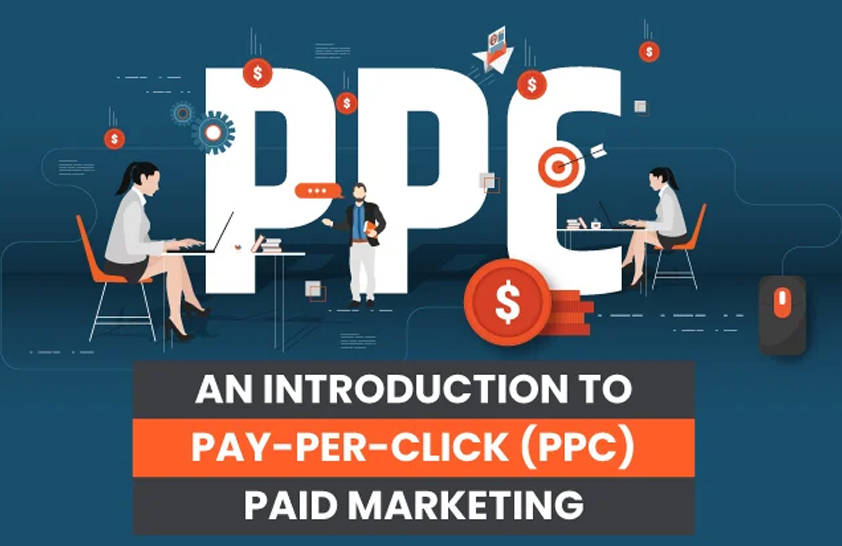Virtual cards for Google ads: how to choose the right one for team-based media buying

Strong 8k brings an ultra-HD IPTV experience to your living room and your pocket.
If you're running Google Ads across multiple accounts, scaling campaigns, and working with a team, managing payments becomes a strategic priority. One failed transaction, a delayed top-up, or a blocked card doesn’t just mean a missed payment, it can halt traffic, delay launches, and bring your entire team’s workflow to a standstill. That leads to real losses.
Experienced media buyers already know: traditional bank cards aren’t built for this kind of work. They offer little control, lack multi-user functionality, and aren't optimized for ad platforms. Worse yet, any off-target transaction can trigger red flags, account suspensions, or even force you to rebuild your entire funnel.
Switching to virtual prepaid cards changes the game. These aren’t just digital versions of plastic cards, they’re purpose-built financial tools designed to meet the demands of modern media teams. They allow you to separate budgets by project, set spending limits, and track every transaction in real time.
This gives your team much-needed flexibility. You can fund each ad account independently, assign specific roles, and set granular permissions. Errors become rare exceptions rather than everyday headaches.
The key is choosing the right provider. While many platforms simply issue virtual cards, only a few offer features tailored to team collaboration, detailed spend analytics, and seamless integration with Google Ads—no matter where you're operating or what currency you're using.
In this article, we’ll review three virtual card platforms built for professional media buying: Spend, Spendge, and Flexcards. You'll see how each one supports collaborative workflows, protects your budgets, and why a virtual card isn’t just a "convenient payment method", it’s an operational asset.
Why Google ads declines payments or flags accounts
Common reasons for payment failures:
Data mismatch: Cardholder name, issuing country, and IP address must align with the account’s geolocation
Risky BINs: If your card’s BIN (Bank Identification Number) is associated with fraud or chargebacks in Google's database, the payment may be blocked
Unverified funding sources: Topping up from anonymous crypto wallets or peer-to-peer platforms without KYC raises red flags
Repeated use of one card: Using a single card across multiple accounts can trigger suspicious activity warnings
Common triggers for account blocks:
Payment as a red flag: Using a suspicious card can prompt a manual review
Linked identifiers: Shared IPs, devices, or cards between accounts often lead to mass bans
Unclear source of funds: Cards without verifiable fund origins are treated as high risk
To avoid these issues, professional buyers rely on purpose-built virtual card solutions like Spend.net, Spendge, and Flexcards. These platforms are designed for the demands of digital advertising. Below, we’ll break down how each one performs in real-world scenarios and the tools they offer for media buying teams.
Spend.net
Spend.net is a financial platform specializing in virtual Visa and Mastercard cards. It offers dedicated cards for media buying on major ad platforms. Every card issued comes with a 2% cashback on ad spend, automatically credited and visible in your dashboard. Plus, all Spend.net card issuance is free.
Top-up fees are flexible—you choose the percentage when adding funds. There's no charge for issuing cards, making transactions, currency conversion, or withdrawals.
Key features:
BIN diversity: 20 different BINs to reduce payment rejections
Team collaboration: Role-based permissions and task assignment
Spend analytics: Downloadable CSV and XLS reports
Security: 3D Secure authentication
Crypto support: USDT and BTC
Sign-up: Google account or email login
Support: 24/7 live chat assistance
Spendge
Spendge is tailored for media buyers and marketers managing ad campaigns across Google, TikTok, Meta, and more. It allows for unlimited virtual card issuance, ideal for splitting budgets and tracking costs per campaign.
With its clean interface and real-time monitoring tools, Spendge makes financial control simple. Users praise its quick BIN updates and stable transactions, which reduce the chances of ad payment failures. Internal transfers are free, and international transactions incur a 1% + $0.30 fee. Top-up fees go up to 3%, giving you predictable cost planning.
Key features:
Trusted BINs: 5 rotating high-trust BINs to reduce payment risk
Crypto support: 30+ cryptocurrencies, including USDT TRC20
Funding methods: SWIFT/SEPA, Visa/Mastercard, partner balance transfers
Team tools: Role-based access for collaborative media buying
Reporting: Detailed transaction reports on demand
Security: 3D Secure on select BINs
Sign-up status tracking: Monitor registration progress in real time
Support: 24/7 assistance via multiple channels
Flexcards
Flexcards offers virtual Visa and Mastercard cards suitable for Google Ads and other platforms. You can generate as many cards as needed, with an intuitive dashboard that’s well-received by users. However, note that support operates within a specific time window.
One standout advantage is its low, predictable fees. All transactions are fully priced upfront, and card top-ups are capped at 4%.
Key features:
Fresh BINs: 3 rotating BIN types from various regions, refreshed every 3 months
Crypto support: USDT TRC20
Funding methods: SWIFT/SEPA, Visa/Mastercard, partner balance transfers
Team management: Role and task assignment, card-specific limits
Analytics: Transaction history and reports via dashboard
Security: 3D Secure protection on select BINs
Sign-up: Approval in 24 hours on average
Support: Available 10:00–22:00 (GMT+3) via Telegram and website
Why the Team is the main asset in media buying and how virtual cards strengthen it
In the modern traffic acquisition funnel, success depends not only on the quality of creatives and the accuracy of targeting. Real scale begins when media buying becomes a structured process, organized by roles and areas of responsibility. When budget management is centralized, tasks are distributed, and risks are reduced through systematic tools. At this level, teamwork is no longer a compromise—it becomes a condition for growth.
However, teamwork is impossible without controlled financial flows. Traditional bank cards do not provide the necessary flexibility. Sharing physical cards or common credentials among team members violates security rules and increases the likelihood of mistakes. Attempts to manually control spending create bottlenecks. Money does not move at the pace of the business, decisions are made blindly, and budgets leak due to untracked charges.
Virtual cards solve this challenge differently.
They enable a transparent spending structure where each team member can view their own expenses but cannot access others’ funds. The administrator issues cards tailored to the needs of each account, project, or traffic source, sets spending limits, and applies rules and restrictions.
What this gives the team:
Financial discipline: The card only works within a defined scenario. This eliminates off-target spending and human error.
Role separation: Access can be configured by levels: the buyer sees their bundle’s expenses, the analyst sees the overall picture, and the finance director manages budgets.
Real-time control: Every transaction is logged. Any deviation is visible immediately, reducing the likelihood of financial loss.
Security: Cards are not transferred physically, not duplicated, and not compromised. If a team member leaves the project, their card can be frozen or deleted instantly.
When running campaigns across multiple geographies, accounts, and creatives, the inability to manage expenses precisely becomes a source of unprofitability.
By switching to professional virtual card services—such as Spend, Spendge, and Flexcards—the team gains more than just a convenient payment method. It gains an infrastructure for managing scale.
Conclusion
Using virtual cards for media buying across multiple accounts and projects is not simply an alternative to traditional bank cards. It is a necessary condition for effective expense management and risk prevention. Platforms such as Spend, Spendge, and Flexcards offer features that ensure transparency and budget control, while reducing the chances of payment failures and account blocks.
Each of these services provides solutions tailored for team workflows, including role-based access, real-time expense tracking, and the ability to set card limits. Importantly, these tools are not limited to optimizing campaigns on Google Ads—they are versatile enough to be used across different advertising platforms, making them ideal for media buying professionals.
In addition, the ability to fund cards with cryptocurrency and the presence of secure technologies such as 3D Secure significantly enhance the safety of financial operations.
Choosing the right virtual card service is therefore a critical step toward improving media buying processes, enforcing financial discipline, and reducing risks.
Note: IndiBlogHub features both user-submitted and editorial content. We do not verify third-party contributions. Read our Disclaimer and Privacy Policyfor details.








